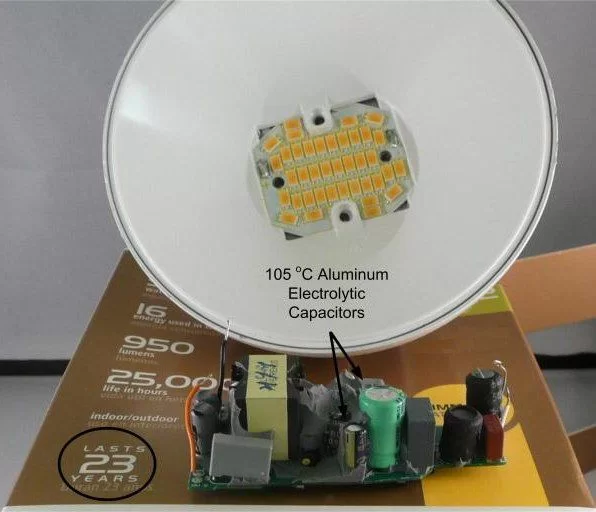Aluminum electrolytic capacitors remain a popular choice in power supplies due to their low cost. However, they have limited life and are sensitive to both hot and cold temperature extremes.
Aluminum electrolytic capacitors are constructed with foils placed on opposite sides of paper saturated with an electrolyte. This electrolyte evaporates over the capacitor’s lifetime, altering its electrical properties. If the capacitor fails, it can be spectacular as pressure builds up in the capacitor, forcing it to vent a combustible and corrosive gas.
The rate at which the electrolytic evaporates is a strong function of the capacitor’s temperature. For every 10 degree Centigrade decrease in operating temperature, the capacitor life is extended by a factor of two. Capacitor life ratings generally are specified at their maximum rated temperature. A typical rating might be 1,000 hours at 105 degrees Centigrade.
Selecting these capacitors for use in long-life applications, such as the LED light bulb shown in Figure 1, where the LED’s must operate for 25,000 hours is problematic. To achieve the full 25,000 hour life, this capacitor requires a temperature of no more than 65 degrees Centigrade.
This is particularly challenging, as the ambient temperature in this kind of application can exceed 125 degrees Centigrade. There are capacitors available that are rated for higher temperatures, but in most instances the aluminum electrolytic capacitor is going to be the life-limiting component of LED replacement bulbs.
For more detail: Avoid these common aluminum electrolytic capacitor pitfalls

